Xanthium
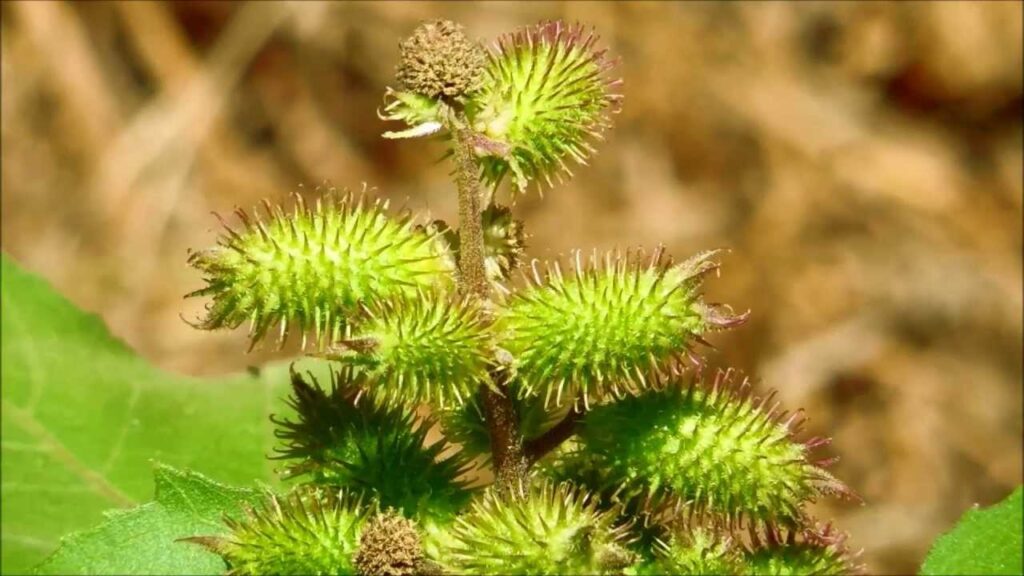
Xanthium, commonly known as Cocklebur, is a herbaceous plant known for its spiky, bur-like seeds. It is a member of the Asteraceae family and is often found in temperate regions around the world. The plant has broad, lobed leaves and produces small greenish flowers that eventually turn into hard, spiny burs. Traditionally, Xanthium has been used in various herbal remedies, particularly in Chinese medicine, where it is valued for its potential health benefits.
1. Size:
- Xanthium typically grows to a height of 1 to 5 feet (30 to 150 cm), with a spread of about 1 to 3 feet (30 to 90 cm). The plant’s sturdy stem and wide leaves give it a bushy appearance.
2. Color:
- The leaves of Xanthium are dark green, and the stems are often tinged with purple or red. The flowers are small and inconspicuous, with the burs turning brown or tan as they mature.
3. Texture:
- The leaves of Xanthium have a rough, slightly hairy texture. The burs are hard and spiky, with a prickly surface that can easily attach to fur or clothing.
4. Fragrance:
- Xanthium does not have a strong fragrance. The plant emits a mild, earthy scent, particularly when crushed or bruised.
5. Uses:
- Xanthium is commonly used in traditional Chinese medicine to treat nasal congestion, headaches, and skin conditions. It is believed to have anti-inflammatory and analgesic properties.
- In some regions, Xanthium has been used in veterinary medicine to treat certain ailments in livestock, such as parasitic infections.
- The plant’s burs have been used historically as a natural insect repellent, though this practice is less common today.
6. Habitat:
- Xanthium thrives in disturbed soils, such as fields, roadsides, and riverbanks. It is commonly found in temperate regions across North America, Europe, and Asia. The plant is highly adaptable and can grow in a variety of soil types, including sandy and clay soils.
7. Cultural and Spiritual Significance:
- In Chinese medicine, Xanthium is known as Cang Er Zi and is used to treat nasal congestion, sinusitis, and certain skin disorders. It is often included in herbal formulas for its supposed ability to dispel wind and dampness.
- In some cultures, Xanthium has been used as a protective herb, believed to ward off negative energies and protect against evil spirits.
Spiritual Properties
- Protection: Xanthium is associated with protection and is often used in rituals to ward off negative influences. The plant’s spiky burs are symbolic of defense and shielding against harm.
- Purification: Some traditions use Xanthium in purification rituals to cleanse spaces of negative energies. The herb is thought to promote a sense of balance and harmony.
Medicinal Properties
- Anti-inflammatory: Xanthium is believed to have anti-inflammatory properties, making it useful in treating conditions like sinusitis, arthritis, and skin inflammation.
- Analgesic: The herb is used to relieve pain, particularly headaches and muscle aches. It is often included in traditional remedies for its pain-relieving effects.
- Antimicrobial: Xanthium has been studied for its potential antimicrobial properties, which may help in treating infections and boosting the immune system.
- Decongestant: Xanthium is commonly used to relieve nasal congestion and sinus pressure, making it a popular remedy for colds and allergies.
Allergic Reactions
Xanthium is generally considered safe when used appropriately, but it may cause allergic reactions in some individuals.
- Skin Irritation: Direct contact with Xanthium’s burs or leaves may cause skin irritation, including redness or itching. It’s advisable to handle the plant with care, especially if you have sensitive skin.
- Respiratory Sensitivity: Inhalation of pollen or particles from Xanthium may trigger respiratory discomfort, such as sneezing or nasal congestion, particularly in individuals with allergies.
- Toxicity: Xanthium seeds and young plants contain toxic compounds that can be harmful if ingested in large quantities. Symptoms of toxicity may include nausea, vomiting, and abdominal pain. It is important to use Xanthium under the guidance of a qualified herbalist.
- Liver Damage: Prolonged use of Xanthium in high doses may lead to liver damage. This herb should be used with caution, especially in individuals with pre-existing liver conditions.
- Drowsiness: Some individuals may experience drowsiness or fatigue after consuming Xanthium, particularly in large doses. Reducing the dosage may help mitigate this effect.
- Dry Mouth: Xanthium may cause dry mouth in some users. Staying hydrated and using the herb in moderation can help manage this side effect.
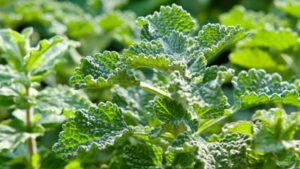
Horehound
Horehound The overall appearance of horehound is distinctive and somewhat rugged, making it a notable herb in both culinary and medicinal applications. With its square
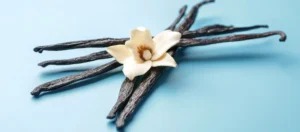
Vanilla Bean
Vanilla Bean Vanilla Bean is the fruit of the tropical orchid Vanilla planifolia, native to Mexico and now cultivated in various tropical regions around the
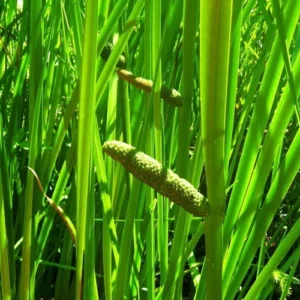
Calamus Root
Calamus Root Calamus Root, derived from the rhizome of Acorus calamus, is a well-known herb in traditional medicine and spiritual practices. Known for its aromatic
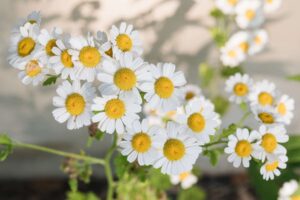
Chamomile Flowers
Chamomile Flowers Chamomile Flowers are small, daisy-like blossoms known for their soothing and calming properties. These flowers have been used for centuries in herbal medicine,
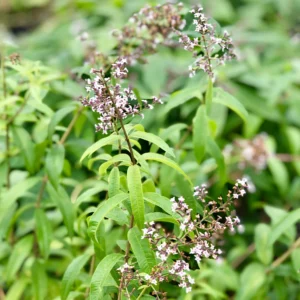
Lemon Verbena
Lemon Verbena Lemon Verbena is a perennial herb known for its intensely lemon-scented leaves and slender, graceful growth. It is cherished in both culinary and

Indian Gooseberry (Amla)
Indian Gooseberry (Amla) Amla, or Indian Gooseberry, is a small, greenish-yellow fruit known for its sour and tangy taste. The fruit is round, smooth, and